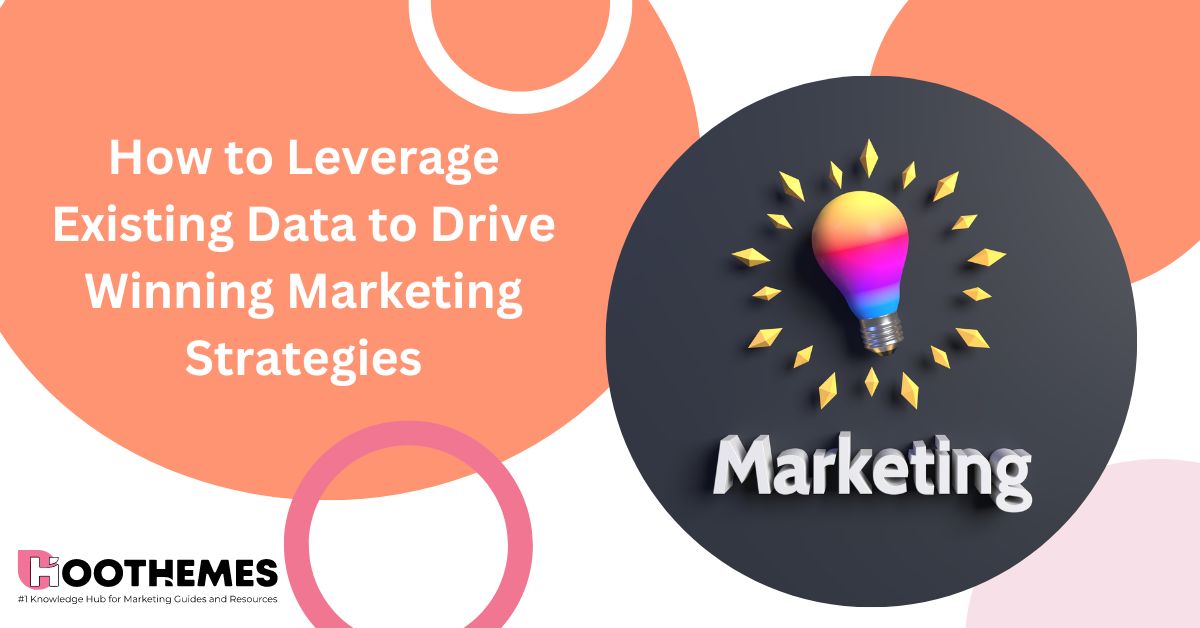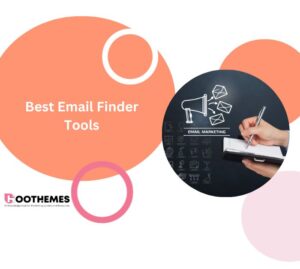In the constantly evolving digital realm, businesses are always searching for innovative methods to develop effective marketing strategies and attain a competitive advantage. One transformative approach that has reshaped the marketing landscape involves harnessing existing data to steer impactful marketing campaigns.
By harnessing the insights buried within their data, businesses can unlock valuable information about customer behavior, preferences, and trends.
This allows them to develop targeted e-commerce marketing campaigns that resonate with their audience and yield impressive results. It’s also advisable to enlist the services of professionals like Bizango, a web design and development agency specializing in helping businesses with their marketing needs.
By leveraging their expertise in design, branding, copywriting, programming, and smart SEO, you can drive winning marketing strategies and propel your businesses toward success. Below is a comprehensive guide on how your business can leverage existing data to develop successful marketing strategies:
Types of Data Used in a Marketing Plan
To create a robust and impactful marketing plan, it is crucial to harness a diverse range of data sources. Employing and analyzing various datasets helps businesses gain invaluable insights into their target audience, market trends, and the performance of their campaigns.
Key data types commonly utilized in a marketing plan include:
Demographic data
Demographic data provides information about the characteristics of a target audience, including age, gender, location, income level, and education.
This helps businesses understand their customer base and tailor their marketing strategies to align with the preferences and needs of specific demographic segments.
Behavioral data
Behavioral data focuses on customer actions and interactions with a company’s products, services, or marketing channels. It includes data on browsing behavior, purchase history, engagement with marketing campaigns, and interactions with websites or mobile apps.
Analyzing behavioral data helps businesses identify patterns, preferences, and customer journeys, enabling them to optimize marketing messages, improve customer experiences, and increase conversions.
Psychographic data
Psychographic data delves into the psychological aspects of a target audience, including their interests, values, opinions, and lifestyle choices.
This type of data provides deeper insights into consumer motivations, preferences, and purchasing behavior. Psychographic segmentation helps you create more targeted and personalized campaigns resonating with your customers’ beliefs and aspirations.
Social media data
Social media data encompasses the information generated through social media platforms, such as user interactions, engagements, comments, and shares.
It provides valuable insights into customer sentiment, preferences, and trends. Analyzing social media data helps businesses identify popular topics, monitor brand perception, and engage with their audience in a more authentic and relevant manner.
Market research data
Market research data involves conducting surveys, focus groups, and interviews to gather information directly from the target audience.
This information helps businesses understand customer preferences, needs, and perceptions, and gather feedback on products or services. Insights from market research data can be utilized to optimize marketing strategies and innovate new offerings.
By incorporating diverse data sources into a marketing plan, you can better understand your target audience and market dynamics. This helps businesses to forge more precise and impactful marketing campaigns that strike a chord with their audience and foster triumph.
How to Leverage Existing Data to Drive Winning Marketing Strategies
Without further ado, let’s go over the steps you should take in order to leverage existing data to drive winning marketing strategies:
1. Understand Your Customers Better
Leveraging existing data provides businesses with valuable insights to understand their customers better.
By analyzing data such as purchase history, website interactions, and social media engagement, businesses can create detailed customer profiles and personas. These profiles help identify key demographic information, preferences, interests, and purchasing patterns.
Equipped with this understanding, businesses can customize their marketing messages and campaigns to deeply connect with their target audience.
For instance, an e-commerce retailer can scrutinize purchase history data to pinpoint the most sought-after products or categories within distinct customer segments.
This valuable information can be utilized to generate personalized recommendations or targeted promotions that are more likely to convert and drive sales.
By leveraging data-driven insights to comprehend customers’ preferences and requirements, you can deliver relevant and captivating marketing campaigns that yield superior outcomes.
2. Optimize Marketing Channels and Messaging
Monitoring existing data can also help optimize marketing channels and messaging to reach the right audience at the right time.
By analyzing data on customer touchpoints and interactions, businesses can identify the most effective marketing channels and allocate resources accordingly.
For instance, if data analysis reveals that a significant portion of the target audience engages more with social media platforms than email marketing, the company can shift its focus and invest in social media advertising to reach a wider audience.
Leveraging data insights helps businesses refine their messaging to resonate better with their target audience. By analyzing customer responses, feedback, and preferences, you can customize your marketing messages to specifically address pain points, accentuate unique value propositions, and effectively convey the advantages of your products or services.
This data-driven approach guarantees that marketing endeavors are precisely targeted, relevant, and in line with customer expectations.
By optimizing marketing channels, you can ensure that your message reaches the right audience through the most effective channels. This may involve reallocating resources from underperforming channels to those that generate better results.
Additionally, understanding customer behavior and preferences allows businesses to craft compelling messaging that speaks directly to their target audience. This targeted approach increases the chances of capturing the attention and interest of potential customers, ultimately driving higher engagement, conversions, and business growth.
3. Predictive Analytics for Future Success
Leveraging data also enables businesses to harness the power of predictive analytics to drive future marketing success. By analyzing historical data and trends, companies can identify patterns and make informed predictions about future customer behavior. This allows businesses to proactively tailor their marketing strategies and stay ahead of the competition.
For instance, a retail enterprise can examine historical sales data to detect seasonal trends and forecast future purchasing patterns. This enables them to optimize inventory management, strategize targeted promotions during peak seasons, and ensure timely availability of the appropriate products.
Predictive analytics can assist businesses in identifying potential customer churners or those likely to engage in repeat purchases. Armed with this information, companies can design personalized retention campaigns to keep customers engaged and loyal.
4. Personalization and Customization
In today’s consumer-centric landscape, personalization and customization have become essential elements of winning marketing strategies. Leveraging existing data allows businesses to create personalized and customized customer experiences, fostering stronger connections and increasing engagement.
Personalization involves tailoring marketing messages, offers, and recommendations to individual customers based on their preferences, behaviors, and purchase history.
By analyzing data on customer interactions, preferences, and demographics, businesses can deliver targeted content that resonates with each customer on a personal level. Personalization enhances the customer experience, increases relevancy, and drives higher engagement and conversion rates.
5. Competitive Analysis and Market Insights
Leveraging existing data provides businesses with valuable insights into their competitors and the broader market landscape. By analyzing data on competitors’ strategies, market trends, and customer sentiment, businesses can gain a competitive advantage and make informed decisions in their marketing efforts.
Conducting a competitive analysis entails examining competitors’ marketing tactics, messaging, pricing, and customer engagement strategies.
By scrutinizing this information, businesses can discern their rivals’ strengths and weaknesses, unique value propositions, and pinpoint avenues for setting themselves apart in the market. This analysis assists businesses in formulating more focused marketing campaigns and strategies that emphasize their competitive advantages.
Leveraging market insights through data analysis enables businesses to understand customer preferences, emerging trends, and shifting demands.
By monitoring social media sentiment, conducting market research, and analyzing customer feedback, companies can identify evolving customer needs and adapt their marketing strategies accordingly. This data-driven approach ensures your business stays relevant and responsive to market dynamics, gaining a competitive edge and capturing new opportunities.
6. Customer Journey Optimization
Taking advantage of existing data allows businesses to optimize the customer journey by identifying pain points and improving the overall customer experience.
By analyzing data on customer touchpoints, interactions, and feedback, companies can identify areas where customers may encounter friction or obstacles in their journey.
For instance, an e-commerce company can analyze website data to identify drop-off points in the purchase funnel. By understanding at which stage customers abandon their shopping carts or encounter difficulties, the company can implement improvements, such as streamlining the checkout process or offering live chat support, to enhance the customer experience and drive higher conversion rates.
Data analysis can help businesses understand the impact of different marketing channels on the customer journey. By tracking customer interactions across various touchpoints, companies can optimize their marketing mix and allocate resources to channels with the greatest influence on driving conversions.
7. Segmentation and Targeting
Leveraging existing data allows businesses to segment their audience and target specific customer groups with tailored marketing campaigns. By analyzing data like demographics, purchase behavior, and interests, you can segment your customer base into distinct groups and create customized messaging and offers tailored to each segment.
For instance, a travel agency can categorize its customers based on their travel preferences, including adventure seekers, luxury enthusiasts, or budget-conscious explorers. This segmentation approach enables the delivery of more personalized and relevant experiences to customers, ultimately enhancing customer satisfaction and engagement.
With this segmentation, the agency can create targeted marketing campaigns highlighting relevant destinations, experiences, and promotions for each customer segment.
By employing personalized targeting strategies, you can significantly enhance your chance of capturing the attention and interest of specific customer groups, thereby increasing conversion rates and fostering higher levels of customer satisfaction.
8. Data-Driven Decision Making
Data-driven decision making is a fundamental aspect of driving winning marketing strategies. Leveraging existing data enables businesses to make informed decisions across various aspects of marketing.
By relying on data analysis and insights, companies can reduce guesswork and base their strategies on factual information. This approach minimizes risks and maximizes the marketing campaigns’ effectiveness.
An online retailer, for instance, can use data analysis to determine the optimal pricing strategy for its products. By analyzing competitor pricing information, historical sales data, and customer buying patterns, the retailer can identify pricing sweet spots that maximize revenue while remaining competitive.
Data-driven decision making ensures that marketing strategies are rooted in evidence and have a higher chance of success in the market.
9. ROI Measurement and Optimization
Analyzing existing data allows businesses to measure the return on investment (ROI) of their marketing efforts and optimize their campaigns for better results. ROI measurement provides valuable insights into the effectiveness and profitability of marketing initiatives, guiding businesses in allocating resources effectively.
By analyzing data on marketing spend and outcomes, businesses can calculate the ROI for each marketing campaign, channel, or tactic. This analysis helps identify which efforts generate the highest returns and which may require adjustments or reallocation of resources.
By understanding the ROI of different marketing activities, businesses can make informed decisions on where to invest their budget and efforts.
Data analysis enables businesses to optimize their marketing campaigns based on ROI insights. By identifying underperforming campaigns or channels with low ROI, companies can make adjustments to improve their performance or reallocate resources to more successful strategies.
This iterative optimization process helps you maximize your marketing ROI and ensure your efforts are focused on activities that generate the best outcomes.
10. Customer Retention and Loyalty Programs
Leveraging existing data allows businesses to focus on customer retention and loyalty by identifying opportunities to engage and retain existing customers.
By analyzing data on customer behavior, purchase history, and satisfaction levels, companies can develop targeted retention strategies and loyalty programs.
For example, an online subscription-based service can analyze customer usage data and identify patterns that indicate a risk of churn. With this information, the company can proactively reach out to customers with personalized offers, exclusive content, or discounts to encourage continued subscription and loyalty.
Leveraging data-driven insights, you can strengthen customer relationships, reduce churn rates, and enhance customer lifetime value.
11. Social Media Campaign Optimization
Harnessing existing data provides invaluable insights to enhance your social media campaigns. Social media platforms accumulate extensive data on user interactions, engagements, and preferences, thereby providing a wealth of information to shape campaign strategies.
By analyzing social media data, businesses can understand which types of content resonate most with their audience. They can identify popular topics, formats, and messaging styles that generate high levels of engagement and sharing.
This analysis helps optimize content creation, allowing businesses to focus on creating the most relevant and impactful social media content.
Additionally, data analysis helps businesses identify the most effective social media channels for their target audience. By examining engagement metrics, follower growth, and conversion rates across different platforms, companies can allocate their resources to channels that deliver the best results.
This optimization ensures businesses invest their time and budget wisely, reaching their target audience through the most effective social media channels.
12. Predictive Customer Lifetime Value (CLV)
Leveraging existing data empowers businesses to predict customer lifetime value (CLV) and make strategic marketing decisions based on long-term profitability. By analyzing historical customer data, purchase patterns, and customer behavior, companies can estimate the potential value of each customer throughout their relationship with the business.
For example, an online retailer can use CLV predictions to allocate marketing resources effectively. By identifying customers with high predicted CLV, the retailer can prioritize personalized marketing campaigns, loyalty programs, and retention efforts to maximize their value.
Predictive CLV analysis helps you make informed decisions on customer acquisition, retention, and resource allocation, resulting in improved marketing ROI and long-term profitability.
Endnote
Harnessing existing data is crucial for developing winning marketing strategies in today’s competitive landscape. By understanding customers better, optimizing marketing channels and messaging, and utilizing predictive analytics, businesses can make data-backed decisions and drive successful marketing campaigns.
Embracing data-driven insights not only improves customer targeting and engagement but also helps you stay ahead of market trends, resulting in better business outcomes.
You should invest in data analysis tools and expertise to unlock the full potential of your existing data and gain a competitive edge in the marketplace.









